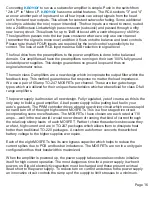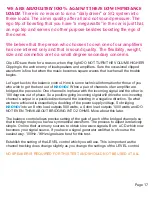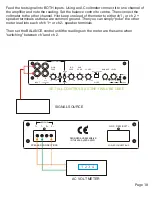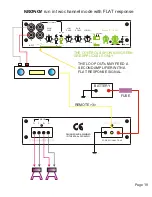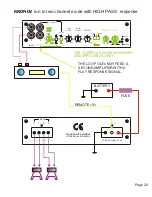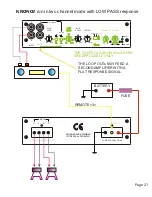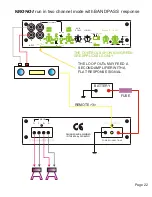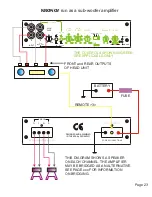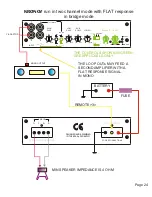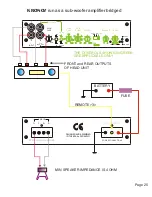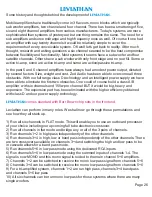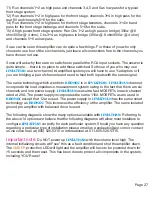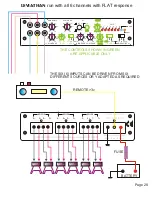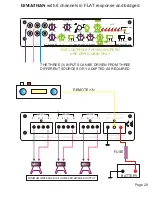
This, the first of our new full range high quality class D amplifiers has been in
development for the past 15 months. The switch to class D was not taken lightly and the
target of these new amplifiers was quite simple. Perform as well as our “traditional” class
A/ B amplifiers. This target was achieved and of course with the added advantage of the
higher efficiency of class D.
The idea of producing
was to have a relatively high powered amplifier which
would fill the role of both a regular two channel unit as well as fulfill the duties of a mono
block.
has some very unique features never seen before on any mobile
amplifier.
The idea of incorporating a BALANCE control was that we had so many requests due to
the fact that ganged level controls do not track perfectly and the BALANCE control allows
you to compensate for this. This is especially useful when running
in bridge
mode as the two channels can be balanced for perfect symmetry.
The high and low pass crossovers are Linkwitz 24dB/octave types. Their frequency
ranges are sufficient to allow
to be part of tri-amplified systems. The addition of
an extra switch allows
to be run as a bandpass amplifier with the high and low
pass crossovers setting the upper and lower frequency cut off points of the band pass.
So with
running as a two channel amplifier, the RCA sockets marked “3” and “4”
are simple loop throughs or line outs. This allows easy daisy chaining of amplifiers.
The heart of any great amplifier is the power supply. After all this is where all the energy is
derived from. A well regulated power supply with low noise is essential for good audio
performance. We at Zed have been building regulated power supplies for over 25 years
and feel that they sound superior to unregulated or “sloppy” power supplies. A small
lesson here. The audio section of an amplifier is only a variable valve from the power
supply to the speaker. How the valve is varied depends on the class of amplifier. In this
case we use a Pulse Width Modulated system (Class D). Any voltage fluctuations on the
power supply rails will manifest themselves as a form of distortion. So if the source of
energy is poor, sound quality will be poor no matter how well the audio amplifier (valve) is
designed. It is synonymous with adding a poor quality fuel to your automobile. It will
perform poorly if the source of energy is poor. The same argument applies to amplifiers.
KRONOS
KRONOS
KRONOS
KRONOS
KRONOS
KRONOS
KRONOS
KRONOS
Oh! Did I forgot to mention that
comes standard with Burr
Brown chip sets in the front end.
Page 14

















